pico Plywood Contact
Contact Information
To learn more about our Plywood Products or discuss your project requirements, please reach out to us through the following channels.
wood's advantages
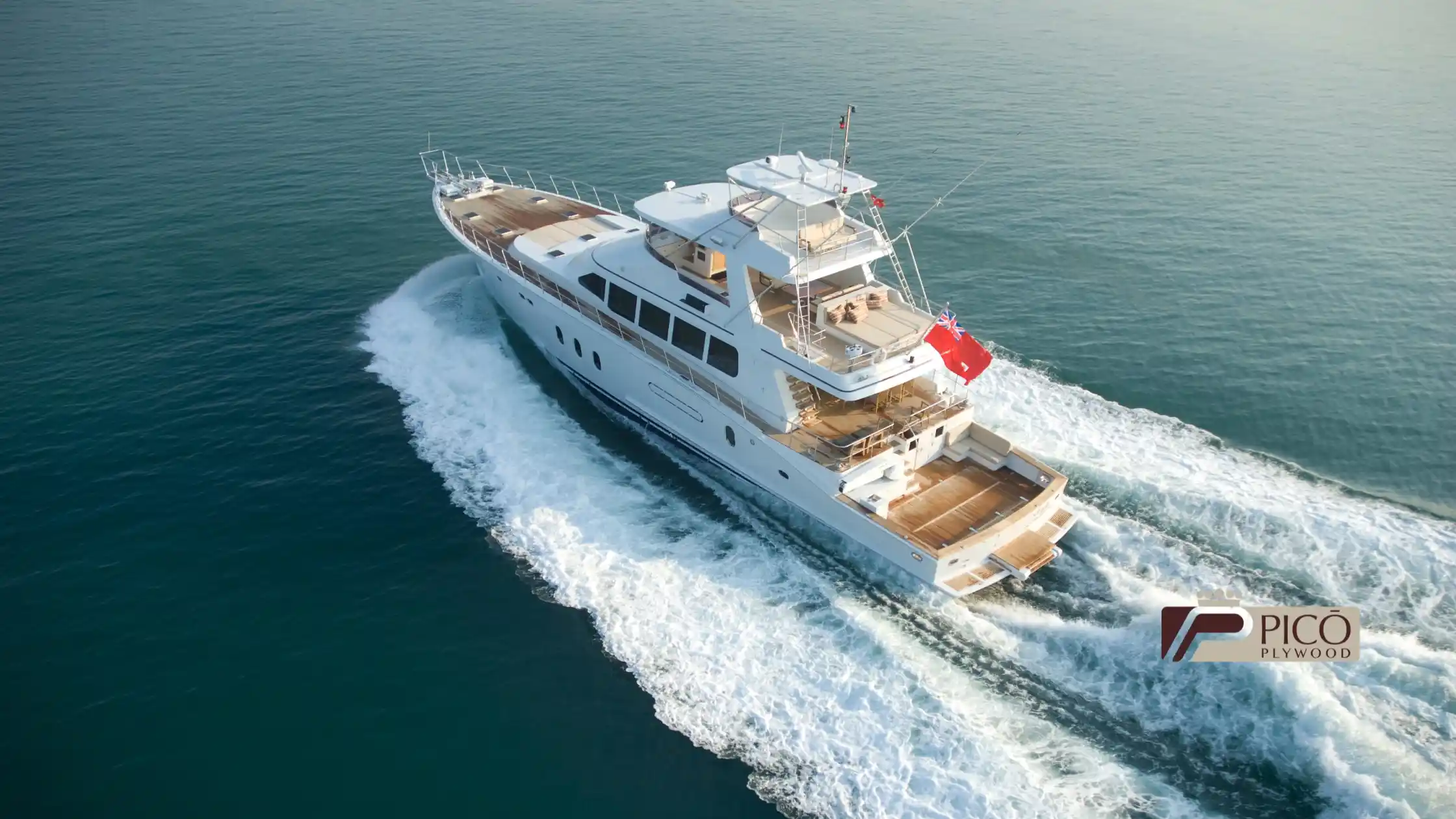
Table of Contents for the Article
Marine plywood board is a type of plywood specially designed to withstand humid environments and water conditions. This material is manufactured by bonding thin layers of wood with water-resistant adhesives, giving it high durability and moisture resistance. Additionally, woods used are typically of high quality and come from species such as okoumé, birch, or pine, known for their robustness and stability.
Marine plywood board is of great importance and relevance in various industries due to its unique properties. In the nautical industry, it is essential for the construction of boats, yachts, and other watercraft, as well as for linings and marine furniture. Its ability to resist moisture makes it ideal for applications in construction and architecture, especially in projects that require durable and water-resistant materials. Additionally, it is widely used in the manufacturing of bathroom and kitchen furniture, as well as outdoor furniture, due to its longevity and strength.
The focus of this article is to explore in-depth the characteristics and uses of marine plywood board. We will analyze its composition, manufacturing process, and the qualities that distinguish it from other types of plywood. We will also discuss its multiple applications in different industries and the benefits it offers in terms of durability, sustainability, and performance. Through specific examples and case studies, we will highlight how marine plywood board has become an indispensable material in various projects and sectors
Marine plywood board is a type of plywood specifically designed to resist moisture and aquatic conditions. This material is composed of multiple thin layers of wood, also known as veneers, which are bonded together using water-resistant adhesives. The woods used are typically of high quality and come from species such as okoumé, birch, or pine, selected for its strength and durability. The key to marine plywood is the orientation of the wood fibers in each layer, which are placed perpendicular to each other to maximize stability and minimize the risk of deformation.
The manufacturing process of marine plywood board involves several critical steps to ensure its strength and durability:
High-quality wood species are chosen, known for their resistance to moisture and structural stability.
Wood is cut into thin sheets or veneers. These veneers are peeled to remove any defects and ensure a uniform surface.
Veneers are bonded with phenolic or melamine adhesives, which are highly resistant to water. This type of adhesive is crucial to maintain the integrity of the plywood in humid environments.
The glued veneers undergo a hot pressing process. This ensures that the layers are well bonded and that the adhesive cures properly, providing a strong and durable bond.
Finally, the board is sanded and trimmed to the desired dimensions. In some cases, an additional sealant is applied to further enhance its water resistance.
Marine plywood board distinguishes itself from other types of plywood by several key characteristics:
Unlike standard plywood, marine plywood is designed to withstand extreme moisture conditions and prolonged exposure to water without degrading or warping. This makes it ideal for nautical and outdoor applications.
Marine plywood uses higher quality and defect-free wood veneers. Knots and voids are virtually absent, increasing its strength and durability.
The adhesives used in marine plywood are more water-resistant and withstand extreme weather conditions compared to adhesives used in other types of plywood.
The arrangement of fibers in perpendicular layers significantly increases the dimensional stability of marine plywood, reducing the tendency to swell, warp, or crack.
In summary, marine plywood board is a highly specialized material designed to offer maximum strength and durability in wet and aquatic conditions. Its manufacturing process and composition significantly differentiate it from other types of plywood, making it ideal for demanding applications in various industries.
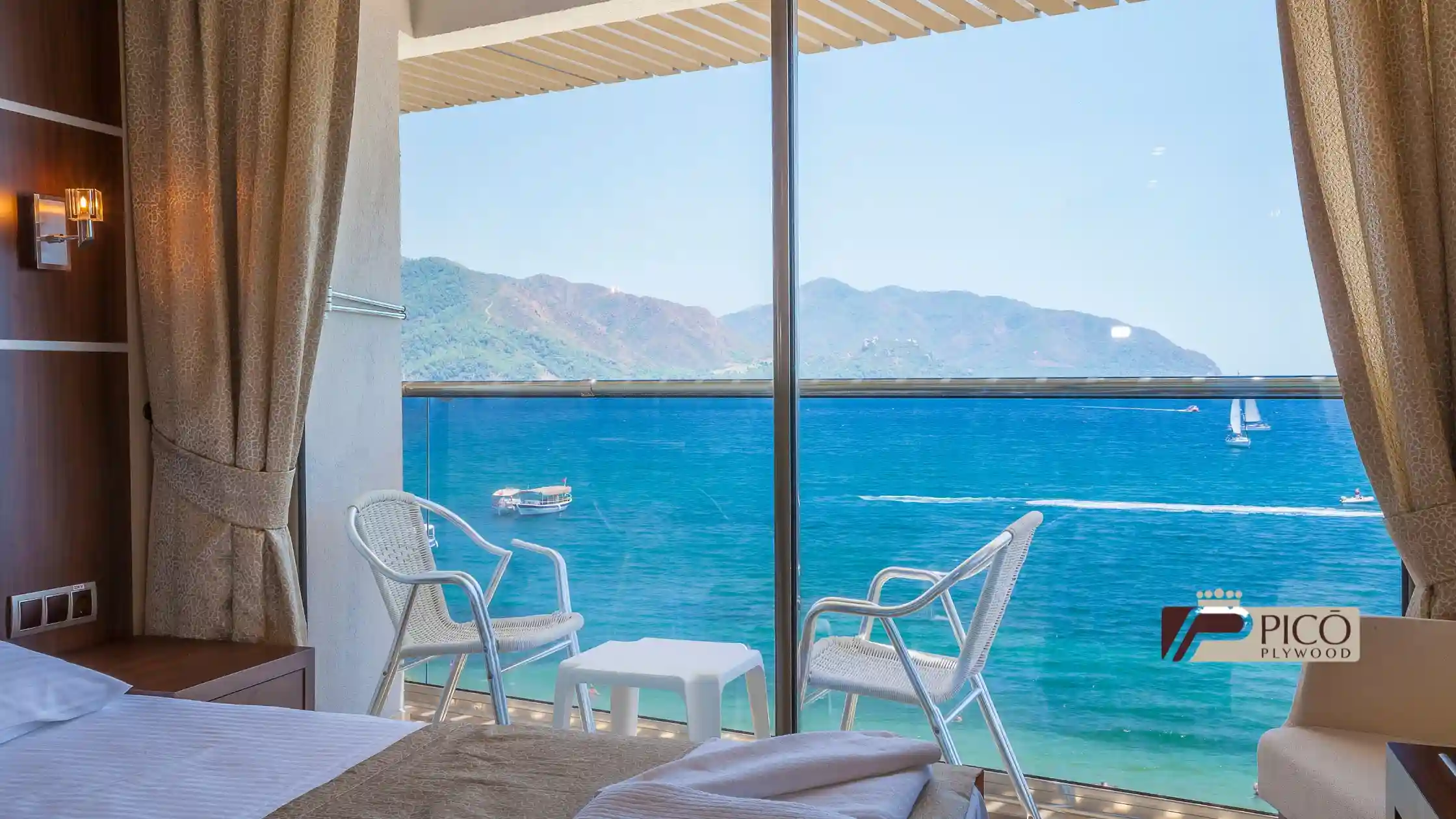
One of the main characteristics of marine plywood board is its exceptional resistance to water and moisture. Thanks to the phenolic or melamine adhesives used in its manufacturing, the layers of wood remain bonded even when exposed to humid conditions for extended periods. This type of adhesive is waterproof, preventing water from penetrating the joints and degrading the board’s structure. Additionally, the woods selected for this type of plywood are typically naturally resistant to water, adding an extra layer of protection.
Marine plywood is designed to offer superior durability and longevity compared to other types of plywood. Its multi-layer structure, with wood fibers oriented perpendicularly, provides additional resistance to deformation and cracking. This feature is crucial for applications in humid and outdoor environments, where constant exposure to water and temperature changes can affect the material’s integrity. The high quality of the woods used also contributes to its resistance to pests and fungi, extending the board’s lifespan.
Marine plywood is manufactured to rigorous technical specifications to ensure its performance in demanding conditions. The veneers used must be of high quality, without knots, voids, or visible defects, ensuring a homogeneous and strong structure. Technical specifications include:
The board’s thickness must be uniform across its surface, ensuring greater strength and stability.
Marine plywood typically has high density, contributing to its mechanical strength and ability to withstand heavy loads.
The board’s surface must be smooth and free of imperfections, facilitating its finishing and application in projects where appearance is important.
The treatments and adhesives used in the manufacturing of marine plywood are essential for its performance. Phenolic and melamine adhesives are the most common due to their high resistance to water and adverse weather conditions. Additionally, some boards may receive additional treatments, such as:
To protect the wood from fungal infestation and mold, which can degrade the material over time.
Applications of insecticides and preservatives to prevent damage caused by termites and other insects.
Marine plywood must comply with various quality standards and certifications to ensure its performance and safety. Some of the most relevant certifications and standards include:
A British standard specifying requirements for marine plywood, including the quality of veneers, adhesives used, and water resistance tests.
A certification confirming that marine plywood meets the strict quality and durability standards required for maritime applications.
Certification ensuring that the wood used comes from sustainably and responsibly managed forests.
In summary, marine plywood board is a high-quality, resilient material designed to withstand the most demanding conditions. Its manufacturing with selected woods, water-resistant adhesives, and specific treatments, along with compliance with rigorous quality standards, make it ideal for a wide variety of applications in industries where durability and moisture resistance are essential.
Marine plywood board, thanks to its unique characteristics of water resistance, durability, and quality, finds itself in a wide variety of applications across different industries. Below, we explore some of its main uses.
Marine plywood is an essential material in the construction of boats and vessels due to its ability to withstand constant exposure to water and adverse maritime conditions. It is used in the manufacturing of hulls, decks, and other structural components. Its high strength and durability ensure that vessels can withstand the harsh conditions of the sea without deteriorating rapidly.
In addition to structural construction, marine plywood is widely used in linings and decks of vessels. This material provides a resilient and stable surface that can withstand constant traffic and exposure to saltwater. It is also used in the interior construction of boats, offering an attractive aesthetic appearance along with its functionality.
Marine plywood is ideal for the fabrication of furniture and accessories within vessels. Chairs, tables, shelves, and other furniture can be made using this material, ensuring they withstand moisture and saline conditions. Additionally, its resistance to deformation and cracking makes it a durable choice for marine furniture.
In construction and architecture, marine plywood is an excellent choice for projects both outdoors and indoors that are exposed to wet conditions. It is used in the construction of exterior structures such as pergolas, facades, and roofs, where its water resistance is crucial. Indoors, it is employed in areas such as bathrooms and kitchens, where moisture is a constant factor.
Marine plywood is a popular choice for wall and floor coverings in areas exposed to moisture, such as basements, saunas, and pools. Its ability to resist water absorption and maintain its structural integrity makes it ideal for these uses. Additionally, it provides a stable and attractive surface for high-quality finishes.
Marine plywood is perfect for the fabrication of bathroom and kitchen furniture, where exposure to water and moisture is constant. Cabinets, countertops, and other furniture made with this material can withstand the humid environment without damage, ensuring a long lifespan and minimal maintenance.
In the recreational vehicle and caravan industry, marine plywood is used to manufacture internal structures, floors, and linings. Its lightweight nature, combined with its water resistance, makes it perfect for these vehicles that are often exposed to wet conditions and must maintain a low weight to improve fuel efficiency.
In the recreational vehicle and caravan industry, marine plywood is used to manufacture internal structures, floors, and linings. Its lightweight nature, combined with its water resistance, makes it perfect for these vehicles that are often exposed to wet conditions and must maintain a low weight to improve fuel efficiency.
Marine plywood is also popular among DIY enthusiasts and crafters. Its water-resistant and durable properties allow for the creation of a wide range of projects, from small furniture pieces and decorations to more complex structures. Its ease of cutting and manipulation makes it a versatile and accessible material for amateurs and professionals alike.
In summary, marine plywood board offers a wide range of applications due to its unique characteristics. From the nautical industry to construction, furniture, and beyond, this versatile and resilient material is an excellent choice for projects that require durability and water resistance.
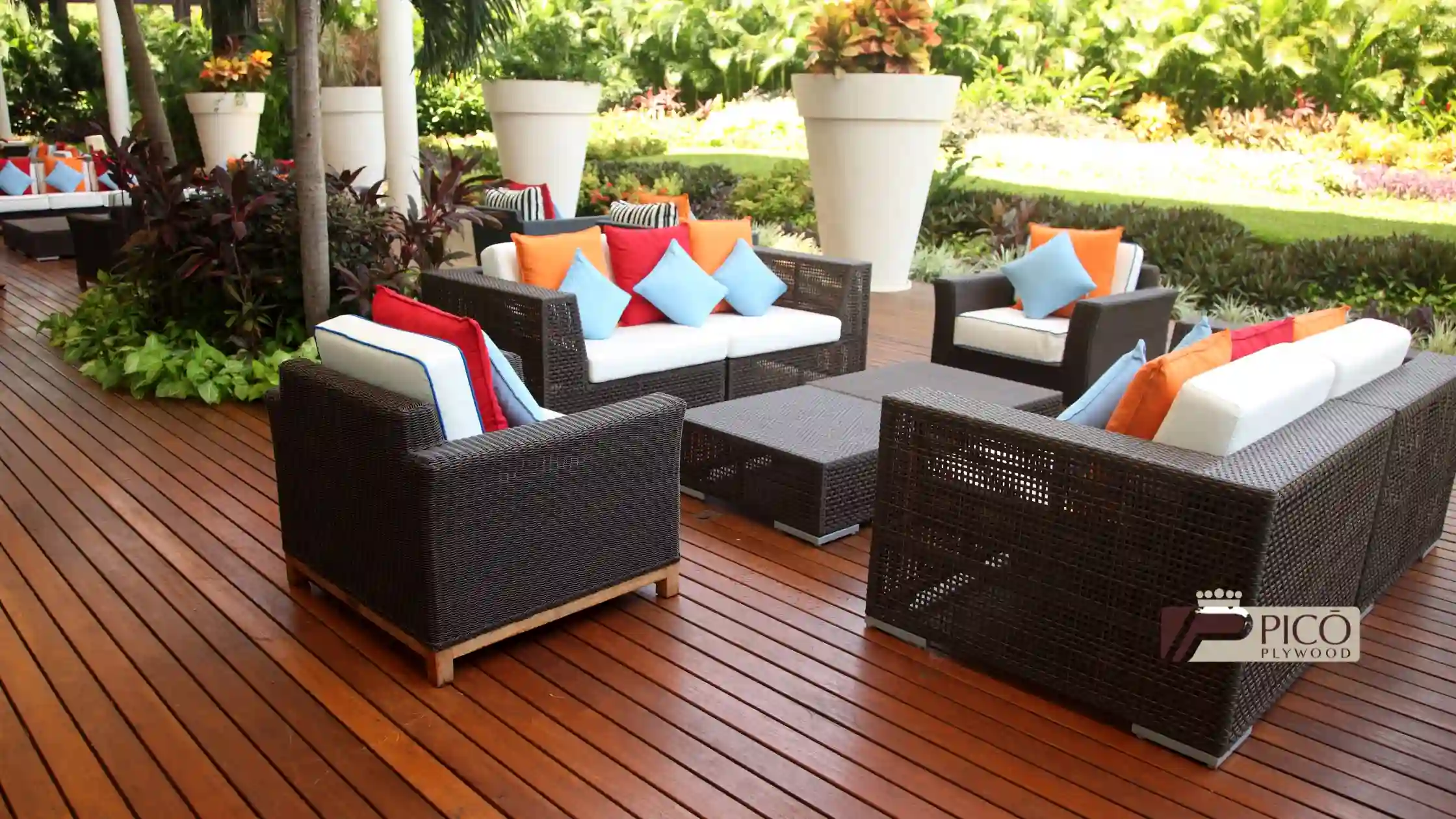
Marine plywood board stands out for its numerous advantages compared to other water-resistant materials, offering both economic and environmental benefits. Below, we explore these advantages in detail.
Marine plywood differs from other water-resistant materials such as plastics, metals, and treated woods in several ways:
Marine Plywood: Manufactured with layers of high-quality wood and water-resistant adhesives, it offers superior strength and durability, even in extreme wet conditions.
Plastics: Although waterproof, plastics can degrade over time due to exposure to sunlight and other elements, losing their structural integrity.
Metals: While durable, metals can corrode over time if not properly and consistently treated.
Treated Woods: Chemically treated woods may withstand moisture, but they do not always offer the same structural stability and aesthetic appeal as marine plywood.
Marine Plywood: It is easy to work with, cut, and shape, allowing for greater flexibility in design and applications.
Other Materials: They may be more challenging to manipulate and less versatile in terms of design.
The use of marine plywood offers several long-term economic benefits:
Durability: Thanks to its resistance to water and adverse conditions, marine plywood has an extended lifespan, reducing the need for frequent replacements and, consequently, lowering long-term costs.
Maintenance: It requires less maintenance compared to other materials, resulting in significant savings in terms of time and money.
Versatility: Its versatility in applications means it can be used in multiple projects, maximizing the initial investment.
Marine plywood is also a sustainable and environmentally friendly option:
Renewable Materials: It is often manufactured using woods from sustainable and responsibly managed sources, which helps conserve natural resources.
Efficient Production: The manufacturing process of marine plywood can be more energy and resource-efficient compared to other materials such as metals and plastics.
Waste Reduction: The durability and long lifespan of marine plywood contribute to less waste generation, supporting more sustainable construction practices.
Marine plywood requires proper maintenance to ensure optimal performance and prolong its lifespan:
Sealing and Protection: Although it is water-resistant, applying an additional sealant can help further protect the material and maintain its appearance and functionality.
Regular Inspections: Conducting periodic inspections to detect any signs of early damage or wear allows for corrective measures to be taken before they develop into major issues.
Proper Cleaning: Keeping marine plywood clean with suitable products can prevent the accumulation of dirt and mold, ensuring the material remains in good condition.
Timely Repairs: Addressing any minor damage promptly, such as scratches or small cracks, can prevent larger problems in the future.
In summary, marine plywood offers significant advantages compared to other materials, both in terms of performance and durability, as well as economic benefits and sustainability. Its relatively simple maintenance and versatility in applications make it an ideal choice for a wide variety of projects, from the nautical industry to construction and furniture.
Choosing and using marine plywood correctly can make a significant difference in the quality and durability of your projects. Here are some key tips and considerations to ensure you get the maximum performance out of this versatile material.
Wood Grade: Opt for high-quality marine plywood, typically classified as Grade A or B, indicating greater strength and durability.
Number of Layers: Ensure the plywood has an adequate number of layers (wood veneers), as this directly affects its strength and stability. More layers often indicate greater strength.
Type of Adhesive: Verify that water and mold-resistant adhesives, such as phenolic adhesives, have been used, which are essential for applications in moist environments.
Thickness: Select the appropriate thickness for your specific project. Structural uses may require thicker boards, while decorative uses may work with thinner boards.
Certifications: Look for certifications like BS 1088, an international standard for marine plywood, ensuring its quality and suitability for nautical applications.
Reputation: Purchase from reputable suppliers with industry experience, such as Picó Plywood, that guarantee high-quality and sustainable products.
Cutting and Fitting: Use appropriate tools to cut and fit the marine plywood. Fine-tooth saws typically provide cleaner cuts.
Sealing Edges: It is crucial to seal all cut edges with epoxy resin or marine sealant to prevent water penetration and extend the material’s lifespan.
Joints and Fastenings: Use corrosion-resistant screws and nails (such as stainless steel or galvanized) to prevent rusting in humid environments.
Regular Inspection: Periodically inspect the board for any signs of wear, damage, or delamination.
Proper Cleaning: Clean the marine plywood with non-abrasive products and avoid the use of harsh chemicals that may damage the surface.
Reapplication of Sealants: Apply wood sealers and protectors as needed, especially in areas constantly exposed to water.
Ignoring Sealing: Failing to properly seal the edges and exposed surfaces can lead to water absorption and material deterioration.
Using Incorrect Fastenings: Using screws and nails that are not corrosion-resistant can result in rusting, compromising the structural integrity of the project.
Improper Handling: Mishandling plywood can cause surface and structural damage. Always handle and store the boards in a manner that avoids bumps and scratches.
Underestimating Necessary Thickness: Using an inadequate thickness for the application can result in poor performance. Make sure to choose the appropriate thickness based on the project’s demands.
In conclusion, proper selection and installation of marine plywood, along with regular and careful maintenance, will ensure that your project is durable, resilient, and efficient. By following these tips, you can maximize the benefits of this versatile and highly functional material.
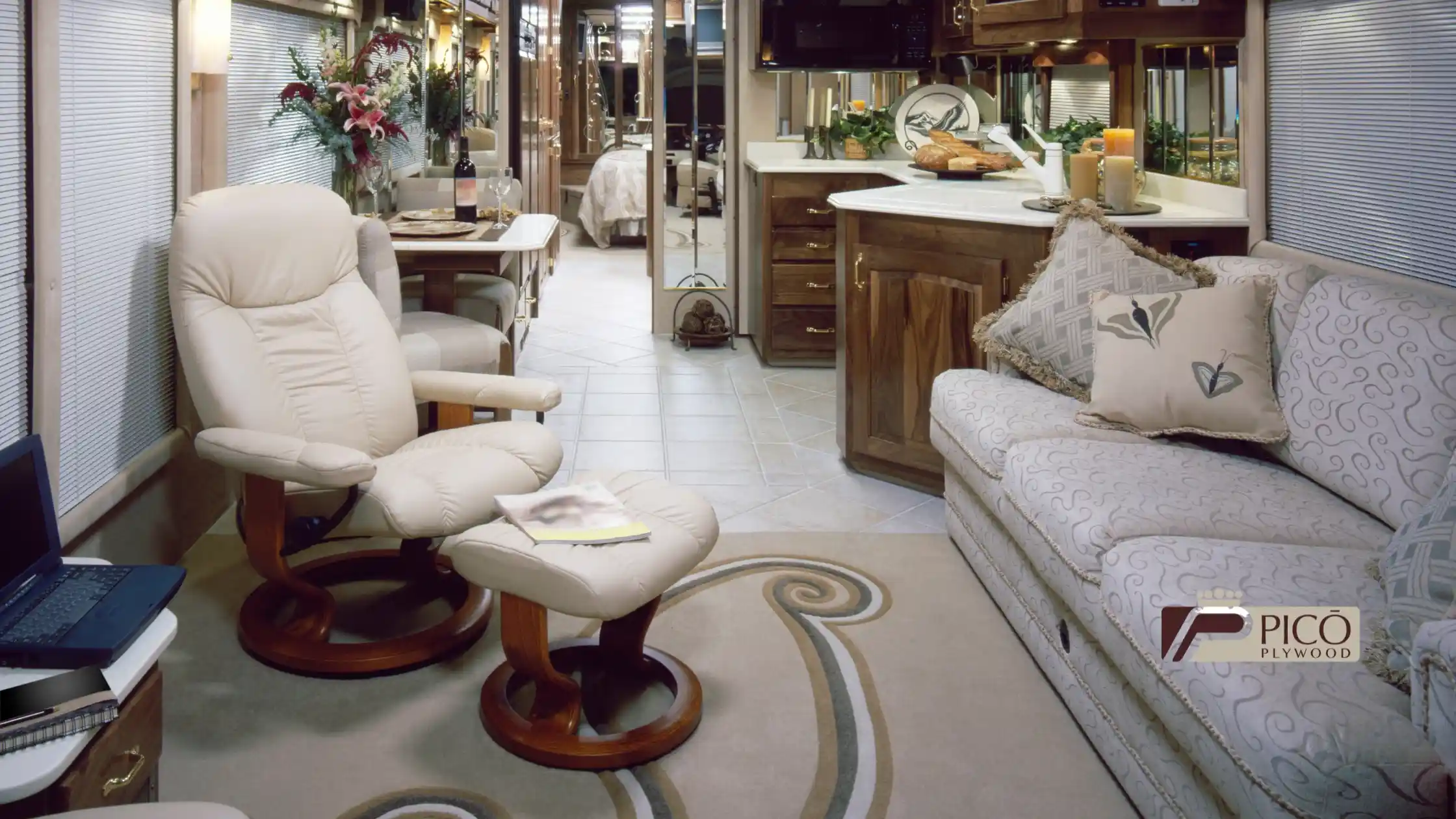
The use of marine plywood has proven to be an excellent solution for various projects across multiple industries, thanks to its characteristics of water resistance, durability, and design flexibility. Below are some specific examples of projects where this material has been used, along with an analysis of the benefits and outcomes in each case
Project:
Construction of luxury yachts at a renowned European shipyard.
Description:
In this project, marine plywood was used for various parts of the yacht, including the main structure, decks, interior linings, and furniture.
Benefits and Outcomes:
Water Resistance: Marine plywood provided excellent resistance to moisture and saltwater, which is crucial in maritime applications.
Durability: The durability of the plywood ensured a long lifespan for the yacht, reducing the need for frequent repairs.
Design Flexibility: The ease of cutting and shaping plywood allowed for customized interior designs that were aesthetically pleasing, enhancing the owners’ experience.
Project:
Renovation of a coastal hotel resort in the Caribbean.
Description:
Marine plywood was used to clad the interior and exterior walls of the resort due to high humidity and constant exposure to saltwater.
Benefits and Outcomes:
Dimensional Stability: Despite high humidity and extreme weather conditions, marine plywood maintained its shape and structure without deformation.
Weather Resistance: The material performed well under adverse environmental conditions, protecting the internal structures of the hotel and extending their lifespan.
Aesthetic Appeal: The plywood provided an elegant and natural finish, enhancing the resort’s aesthetics and attracting more guests.
Project:
Manufacturing outdoor furniture for a public park in a city in Northern Europe.
Description:
Marine plywood was used to construct benches, tables, and other outdoor furniture that needed to withstand variable weather conditions and heavy use by visitors.
Benefits and Outcomes:
Weather Resistance: Furniture made with marine plywood endured continuous exposure to rain, snow, and temperature changes without showing signs of deterioration.
Low Maintenance: The furniture required minimal maintenance, saving costs and efforts for the park authorities.
Sustainability: The choice of sustainable marine plywood contributed to the park’s conservation initiatives, aligning with the city’s environmental objectives.
Project:
Design and construction of caravan interiors for a leading recreational vehicle company.
Description:
Marine plywood was used for the interiors of the caravans, including floors, walls, ceilings, and built-in furniture.
Benefits and Outcomes:
Lightweight and Sturdy: Marine plywood provided a lightweight yet robust solution, enhancing the maneuverability of the caravans and reducing fuel consumption.
Durability in Extreme Conditions: Caravans, which often encounter changing weather conditions, benefited from the durability and resilience of marine plywood.
Design Flexibility: The material’s ability to be molded and customized allowed for ergonomic and personalized interiors, enhancing comfort and functionality for end users.
These case studies highlight the versatility and effectiveness of marine plywood in a variety of applications. From luxury yachts to hotel resorts, public parks, and recreational vehicles, the use of this material not only provides functional and economic benefits but also significantly contributes to the sustainability and efficiency of projects.
Marine plywood emerges as an exceptionally versatile and durable solution for a wide range of applications across various industries. Throughout this article, we have explored its unique characteristics and numerous uses, highlighting its water resistance, durability, and design flexibility.
In retrospect, it is clear that marine plywood not only offers excellent protection against moisture and the elements but also provides a solid foundation for projects requiring superior strength and a long lifespan.
Its importance in industries such as maritime, construction, architecture, and furniture is undeniable. From boat construction to wall cladding in coastal climates, this material has proven to be a reliable and effective choice.
When considering future projects, it is imperative to consider the advantages offered by marine plywood. Its ability to withstand adverse conditions and its contribution to sustainability make it a smart and responsible choice for a wide variety of applications.
Therefore, we invite all those involved in construction, design, and manufacturing projects to consider the use of our marine plywood. With its unique combination of strength, durability, and versatility, this material promises to elevate the standard of quality and performance in every application.
pico Plywood Contact
Contact Information
To learn more about our Plywood Products or discuss your project requirements, please reach out to us through the following channels.
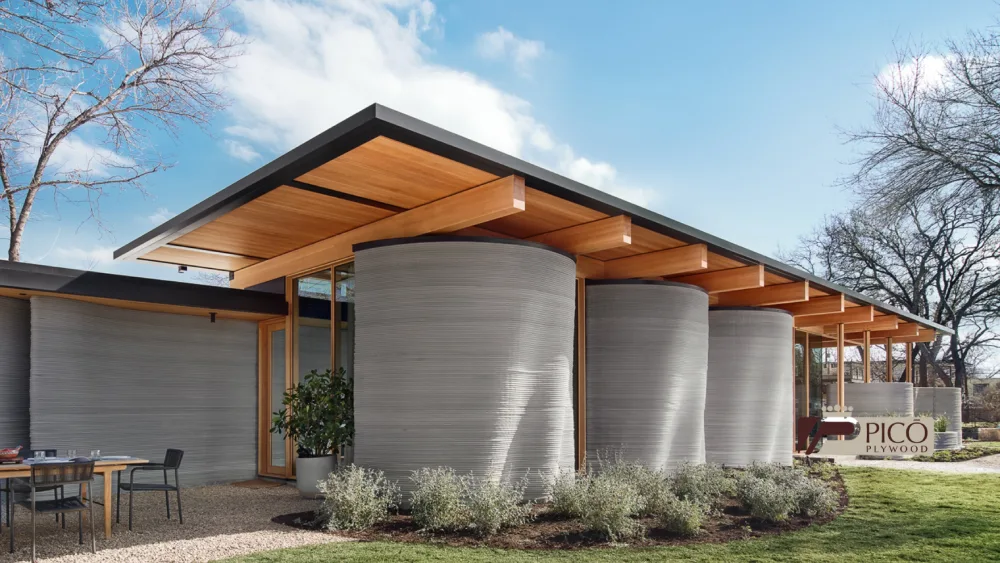
Esta web utiliza cookies para que podamos ofrecerte la mejor experiencia de usuario posible. La información de las cookies se almacena en tu navegador y realiza funciones tales como reconocerte cuando vuelves a nuestra web o ayudar a nuestro equipo a comprender qué secciones de la web encuentras más interesantes y útiles.
Strictly necessary cookies must always be enabled so that we can save your cookie setting preferences.
If you deactivate this cookie we will not be able to save your preferences. This means that each time you visit this website you will have to activate or deactivate cookies again.
Esta web utiliza Google Analytics para recopilar información anónima tal como el número de visitantes del sitio, o las páginas más populares.
Dejar esta cookie activa nos permite mejorar nuestra web.
Please enable strictly necessary cookies first so we can save your preferences!